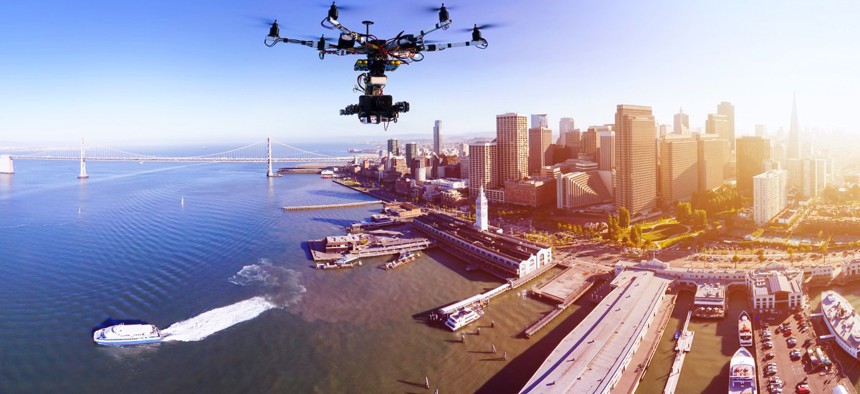Forget Downtown. Smart City Districts Are the New Social and Economic Hubs

San Francisco, California Alexey Yuzhakov / Shutterstock.com
A new White House report urges the creation of financing mechanisms to create more development areas geared toward innovation.
Downtown areas and central business districts have traditionally been the hubs of economic activity in a city. But these days, they aren’t necessarily the places where innovations in urban infrastructure are going to take shape before they’re deployed elsewhere, according to a new report from the President’s Council of Advisors on Science and Technology.
The White House document, released Tuesday, discusses the potential of what are described as “districts.”
These “living laboratories” were pioneered as innovation districts in certain cities, places intended for job creation and economic development, but became models of sustainability, accessibility, mobility and connectivity.
The “Technology and the Future of Cities” report builds on the Obama administration’s Smart Cities Initiative in stressing place-based policies promoting research and development and IT solutions with districts as the workshops:
A district does not necessarily have a predefined scale, nor must it fall within the political boundaries of a single city. A district has an area and population that are large enough for new technology implementations to have an impact, but also manageable from the point of view of clarity of intervention, tuning, collection of data, and assessment of progress and lessons learned.
The global stakes are high in the race to make cities “smart”—job, startup and product creation—and PCAST recommends broader information sharing and a systematic approach to developing municipal open data resources facilitated by the federal government. That’s in addition to greater coordination of municipal infrastructural investment between federal agencies.
18F, the General Service Administration’s team of digital technology consultants, on Tuesday announced plans to assist federal departments providing grants to state and local programs in designing and contracting agile, modular systems.
PCAST’s report proposes four federal courses of action:
- The secretary of Commerce—working with the secretaries of housing and urban development, transportation and energy—should establish the Cities Innovation Technology Investment Initiative supporting new smart city models that are inclusive.
- The Department of Housing and Urban Development promote advances in urban technology innovation by appointing a chief technology or innovation officer and establishing innovation laboratories.
- Financing legislation for qualified public infrastructure bonds and an Advanced Technology Infrastructure Incubator program should be prioritized to form urban development districts.
- The National Science and Technology Council should create an Urban Science Technology Initiative subcommittee for coordinating federally-funded R&D informed by CITII.
Urban development districts differ from first-generation innovation districts, according to the report, in that they integrate technologies with policies and their best practices can be shared between districts. By interconnecting innovations shown in the table below, the districts can optimize themselves and report results.

When it comes to constructing smart cities, these districts are fast-becoming the transformative units.
Dave Nyczepir is a News Editor at Government Executive’s Route Fifty.
NEXT STORY: 5 tech challenges holding back robotics






